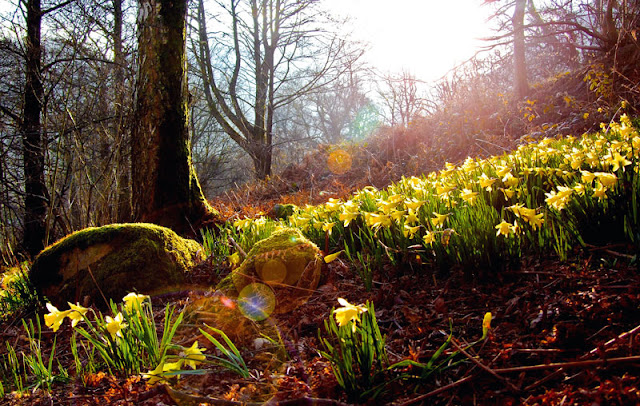Siberian Bugloss, False Forget Me Not, Heartleaf Brunnera
Striking panicles of tiny blue-violet flowers often appear before the large heart shaped leaves develop in early spring.
Many people confuse this hardy worker with Virginia Bluebells or Forget-Me-Nots.
Brunnera is happiest in humus rich constantly moist, part shade or shady areas and will self sow in the right conditions.
Cultivated forms include white flowers and variegated foliage.

Showy plants are all very well, but a garden needs robust, dependable and modest plants that don't require constant attention.
Brunnera macrophylla, with its 20in-tall (50cm) airy sprays of blue forget-me-not flowers and dense mounds of neat foliage, is a mainstay of many shady gardens, but rarely receives plaudits.
'Jack Frost' and became a star of the shady garden.
The bright blue flowers last longer than those of the species, starting in February and continuing to June, and make a spectacular partnership with the silver foliage.
Breeders are producing more cultivars.
'Looking Glass' has leaves that are even more silvery, without the green margin that adds to 'Jack Frost's' beauty.
Another silver-leaved form, 'Mr Morse', has white flowers.
This gives none of the striking effect of blue flowers against silver leaves and is rather insipid.
'Betty Bowring' is floriferous and long-flowering.
The bright white flowers make a dramatic contrast with the dark green foliage.
'Betty Bowring' and 'Jack Frost' are beautiful plants that have lifted the profile of brunnera.
Brunnera needs to be grown away from direct sunlight.
The dappled shade under deciduous trees and shrubs is ideal.

Good companions Brunnera makes good groundcover and mass plantings in flower are a spectacular sight.
Dicentra spectabilis 'Alba' enjoys the same conditions as brunnera and the arching stems of its white flowers mingling with the froth of blue flowers and reflecting the silver foliage of 'Jack Frost' is a beautiful partnership.
The dark foliage and deep blue flowers of Geranium pratense 'Hocus Pocus' are enhanced by the silver foliage of 'Jack Frost' long after the brunnera has stopped flowering.
- Brunnera: How to grow - Telegraph
- Guide to woodland plants or plants for shade : Plants for shade blog



